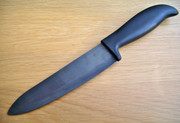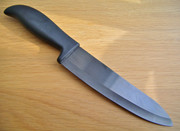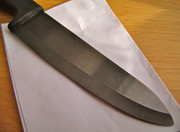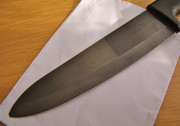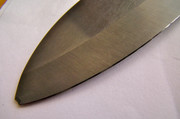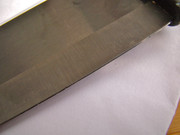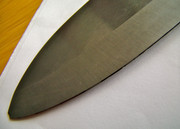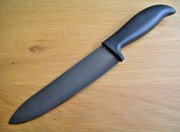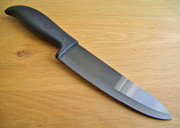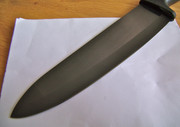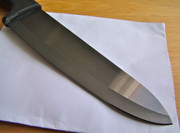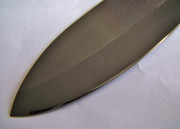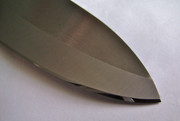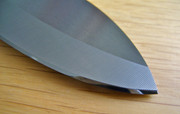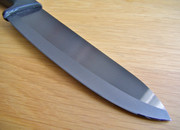A niece of mine is an avid amateur Chef (but not yet a knife afi), and this black ceramic knife (a rebranded Kyocera) is one of her favorites in the kitchen, as due to the tougher blade material the edges can be made thinner and thus the knife cuts better than a white ceramic version.
Longtime use however (not always on a suitable cutting board) plus storing it unprotected in a drawer between a bunch of steel bladed knives had blunted the edge to a point next to unusable, complete with quite a lot of (micro) chips and a broken tip.
This is the knife as it was when i received it.
(when you click the pictures 2 x you can see the chips clearly)
This is the knife after sharpening.
I reprofiled the rather bad factory edge to an ever so slight convex edge of +/- 25 degrees inclusive, and the sharpness is just hairwhittling (only towards the root, not to the point)
It easily slices single layer toiletpaper (torn apart 3-layered version) and a tomato of course.
Specs:
Overall length: 11.0 inch (28,0 cm)
Blade length: 5.8 inch (14,8 cm)
Blade thickness: 1,84 mm
Blade type: black ceramic / saber-hollow
Thickness behind the edge: 0,4 mm
A black (HIP) blade is made out of a black zirconium oxide and offers extra durability.
This type of blade goes through an extra firing process called a "hot-isostatic press," creating a tighter weave between the ceramic molecules, thus creating a tougher blade.
The white ceramic blade is also made out of zirconium oxide, but does not go through this expensive sintering process.

